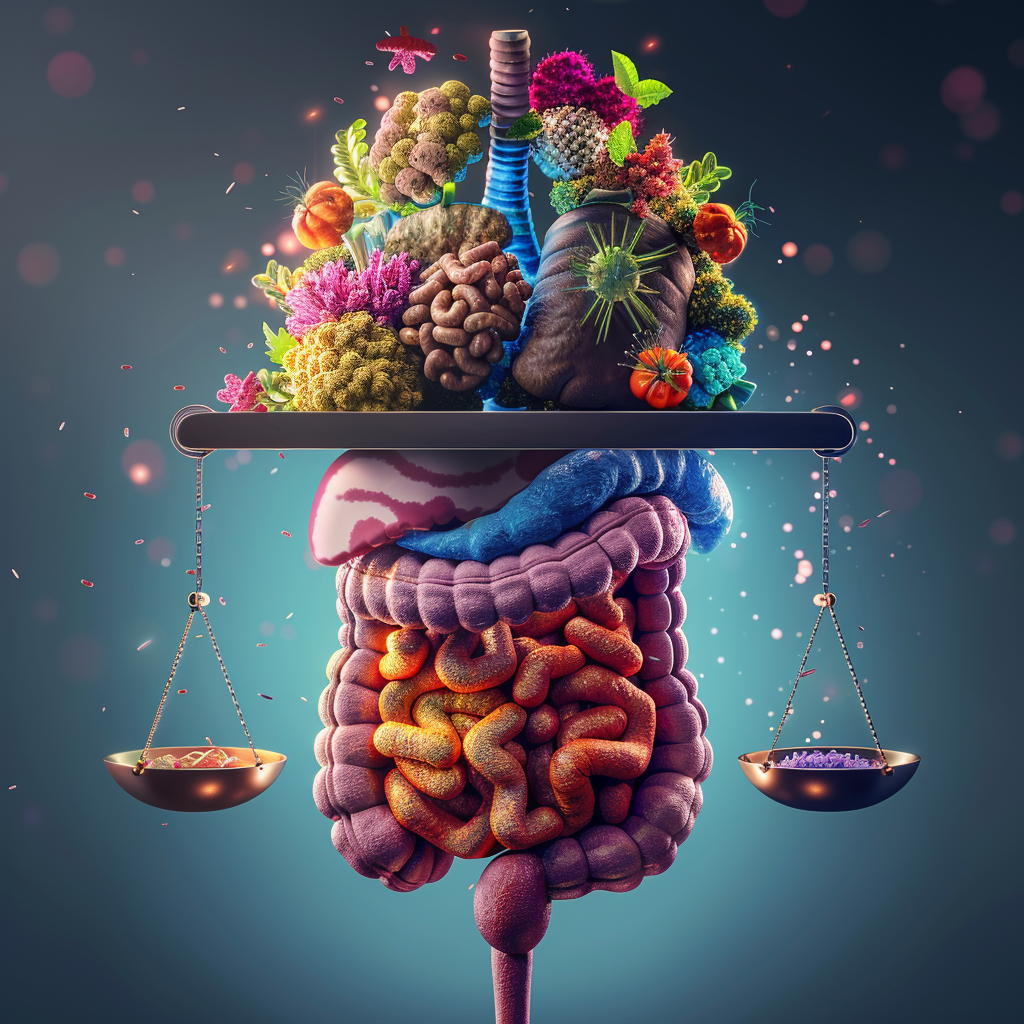Introduction
Weight loss remains a significant concern for millions of people globally, driven by the alarming rise in obesity-related diseases such as type 2 diabetes, cardiovascular diseases, and certain cancers. Despite the plethora of weight loss advice available, many people struggle to shed pounds and keep them off. The complexity of weight loss goes beyond simple calorie counting, involving intricate interactions between metabolism, hormones, and lifestyle factors. This article delves into ten surprising and scientifically-backed insights into weight loss, shedding light on what truly works in the battle against obesity.
1. Metabolic Adaptation: The Body’s Response to Caloric Deficit

One of the most surprising and challenging aspects of weight loss is the body’s adaptive response to caloric restriction, known as metabolic adaptation or adaptive thermogenesis. When you reduce caloric intake, your body compensates by lowering its metabolic rate, making it harder to lose weight and easier to regain it once normal eating patterns resume. This phenomenon is a survival mechanism developed during periods of food scarcity in our evolutionary history. Studies have shown that this adaptive response can persist long after weight loss, contributing to the high rates of weight regain .
2. The Gut Microbiome: A Key Player in Weight Management

Recent research has uncovered the critical role of the gut microbiome in weight regulation. The trillions of bacteria residing in the gastrointestinal tract influence digestion, fat storage, and even the production of hormones related to hunger and satiety. Certain gut bacteria have been linked to obesity, while others are associated with a leaner body mass. A diet rich in fiber, prebiotics, and probiotics can promote a healthier gut microbiome, potentially aiding in weight loss efforts. The gut-brain axis, a bidirectional communication system between the gut and brain, also plays a role in regulating appetite and energy balance .
3. Intermittent Fasting: Not Just About Cutting Calories

Intermittent fasting (IF) has gained popularity as a weight loss strategy, but its benefits extend beyond mere calorie restriction. IF involves cycling between periods of eating and fasting, which can help regulate insulin levels, enhance fat oxidation, and improve metabolic health. Research has shown that IF may also influence circadian rhythms, aligning eating patterns with the body’s natural biological clock. This synchronization may enhance weight loss and overall health by reducing inflammation and oxidative stress .
4. The Thermic Effect of Food: Not All Calories Are Equal

The thermic effect of food (TEF) refers to the energy expended during digestion, absorption, and metabolism of nutrients. Interestingly, different macronutrients have varying TEFs, meaning they require different amounts of energy to process. Protein has the highest TEF, followed by carbohydrates and fats. This means that a diet higher in protein can boost metabolism and promote satiety, potentially aiding in weight loss. Additionally, whole foods generally have a higher TEF than processed foods, further emphasizing the importance of dietary quality in weight management .
5. Sleep Deprivation: A Hidden Obstacle to Weight Loss

Sleep plays a crucial role in regulating hormones that influence hunger and appetite. Lack of sleep disrupts the balance of ghrelin and leptin, hormones responsible for stimulating and suppressing appetite, respectively. Sleep deprivation increases ghrelin levels and decreases leptin levels, leading to increased hunger and cravings, particularly for high-calorie foods. Furthermore, inadequate sleep impairs insulin sensitivity, increasing the risk of weight gain and metabolic disorders. Addressing sleep hygiene is therefore essential for effective weight loss .
6. The Role of Brown Fat: Burning Calories Instead of Storing Them

Unlike white fat, which stores energy, brown fat burns calories to generate heat. This thermogenic tissue has garnered attention for its potential role in weight loss. Brown fat is more abundant in infants but decreases with age; however, recent studies suggest that it can be activated in adults through cold exposure and certain dietary components like capsaicin (found in chili peppers). Activating brown fat could potentially increase energy expenditure and aid in weight loss, offering a novel approach to obesity management .
7. Stress and Weight Gain: The Cortisol Connection

Chronic stress triggers the release of cortisol, a hormone that can lead to weight gain, particularly in the abdominal region. Cortisol increases appetite and encourages the storage of fat, especially visceral fat, which is associated with greater health risks. Stress also affects sleep, eating behaviors, and physical activity levels, all of which can contribute to weight gain. Effective stress management techniques, such as mindfulness, exercise, and relaxation, are therefore important components of a comprehensive weight loss strategy .
8. Genetic Factors: Why Weight Loss Is Harder for Some

Genetics play a significant role in an individual’s susceptibility to obesity and their ability to lose weight. Certain genetic variants can affect metabolism, appetite, fat storage, and even the likelihood of engaging in physical activity. For example, mutations in the FTO gene have been linked to increased hunger and caloric intake. While genetic factors can make weight loss more challenging, they are not deterministic. Lifestyle interventions, including diet and exercise, can still be effective, although they may need to be tailored to the individual’s genetic profile .
9. The Impact of Ultra-Processed Foods: More Than Just Empty Calories

Ultra-processed foods, which are high in sugar, unhealthy fats, and additives, have been linked to increased calorie intake and weight gain. These foods are often engineered to be hyper-palatable, triggering overconsumption. Moreover, they can disrupt hunger and satiety signals, leading to overeating. A diet high in ultra-processed foods is also associated with inflammation and metabolic dysregulation, further complicating weight loss efforts. Reducing the intake of these foods and opting for whole, minimally processed alternatives can significantly impact weight management .
10. The Importance of Non-Exercise Activity Thermogenesis (NEAT)

Non-exercise activity thermogenesis (NEAT) refers to the energy expended during daily activities such as walking, fidgeting, and even standing. NEAT can vary significantly between individuals and plays a crucial role in total daily energy expenditure. Small increases in daily movement can add up, making a significant difference in weight management over time. For those who find structured exercise challenging, increasing NEAT can be an effective and sustainable way to burn more calories and support weight loss .
Conclusion
Weight loss is a multifaceted process influenced by a complex interplay of biological, psychological, and environmental factors. Understanding the science behind these factors can provide valuable insights and more effective strategies for those struggling to lose weight. From the role of the gut microbiome to the impact of sleep and stress, each of these surprising realizations contributes to the broader understanding of weight management. By integrating these insights into personalized and sustainable lifestyle changes, long-term weight loss success is more achievable.
References:
- Rosenbaum M, Leibel RL. Adaptive thermogenesis in humans. Int J Obes (Lond). 2010;34 Suppl 1
. - Turnbaugh PJ, Ley RE, Mahowald MA, et al. An obesity-associated gut microbiome with increased capacity for energy harvest. Nature. 2006;444(7122):1027-1031.
- Cani PD, Delzenne NM. The role of the gut microbiota in energy metabolism and metabolic disease. Curr Pharm Des. 2009;15(13):1546-1558.
- Mattson MP, Longo VD, Harvie M. Impact of intermittent fasting on health and disease processes. Ageing Res Rev. 2017;39:46-58.
- Lejeune MP, Westerterp KR, Adam TC, et al. Protein intake and thermogenesis in weight-stable and weight-reducing young women. Am J Clin Nutr. 2006;83(5):1096-1102.
- Spiegel K, Tasali E, Penev P, Van Cauter E. Sleep curtailment results in increased hunger and changes in ghrelin and leptin levels in healthy young men. Ann Intern Med. 2004;141(11):846-850.
- Cypess AM, Lehman S, Williams G, et al. Identification and importance of brown adipose tissue in adult humans. N Engl J Med. 2009;360(15):1509-1517.
- Epel ES, McEwen B, Seeman T, et al. Stress and body shape: stress-induced cortisol secretion is consistently greater among women with central fat. Psychosom Med. 2000;62(5):623-632.
- Loos RJF, Yeo GSH. The genetics of obesity: from discovery to biology. Nat Rev Genet. 2022;23(2):120-133.
- Monteiro CA, Moubarac JC, Cannon G, et al. Ultra-processed products are becoming dominant in the global food system. Obes Rev. 2013;14 Suppl 2:21-28.
- Levine JA, Vander Weg MW, Hill JO, Klesges RC. Non-exercise activity thermogenesis: the crouching tiger hidden dragon of societal weight gain. Arterioscler Thromb Vasc Biol. 2006;26(4):729-736.
This article provides a thorough exploration of the scientific nuances surrounding weight loss, presenting readers with actionable insights backed by current research.

